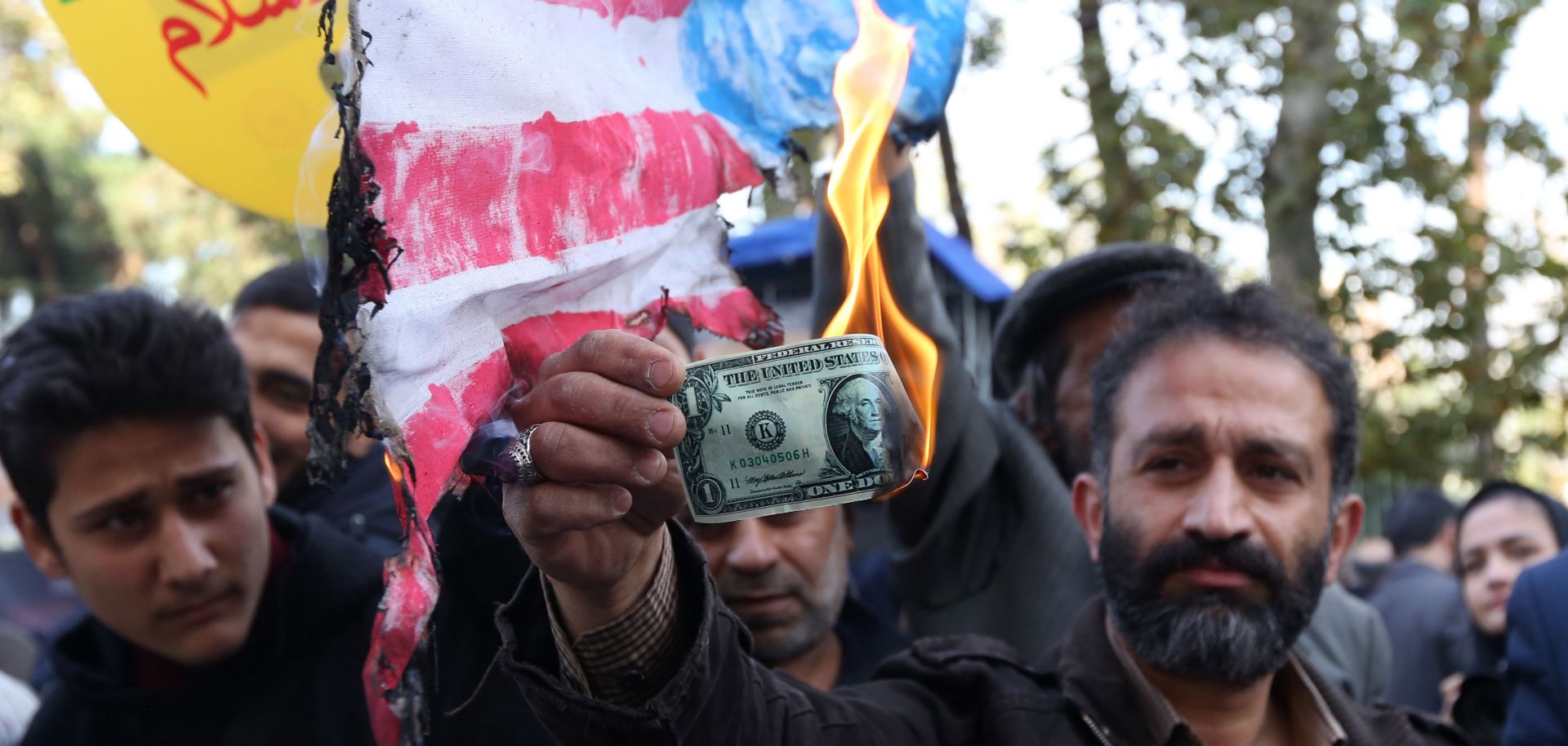ASSESSMENTS
Why Iran's Government Will Bear the Weight of U.S. Sanctions
Nov 21, 2018 | 10:00 GMT

On the eve of renewed sanctions by Washington, an Iranian man burns a U.S. dollar during a demonstration outside the former U.S. Embassy in Tehran on Nov. 4. The demonstration marked the 39th anniversary of the embassy's storming by student protesters in 1979, which triggered a 444-day hostage crisis.
(ATTA KENARE/AFP/Getty Images)
Highlights
- Iran's economy will enter a sharp recession in 2019, but Tehran can capably manage any political fallout that may follow.
- Economically, Iran will emphasize prudent management and protection of precious hard currency reserves while boosting domestic investment through its public sector and trying to continue financial sector reform.
- While it focuses on economic survival in the face of sanctions, however, Iran will make only limited progress on much-needed longer-term reforms, such as strengthening the private sector.
- Iran's squabbling political factions will try to take advantage of the economic environment, but in the face of the crisis, they will work together to prioritize regime preservation.
Subscribe Now
SubscribeAlready have an account?
